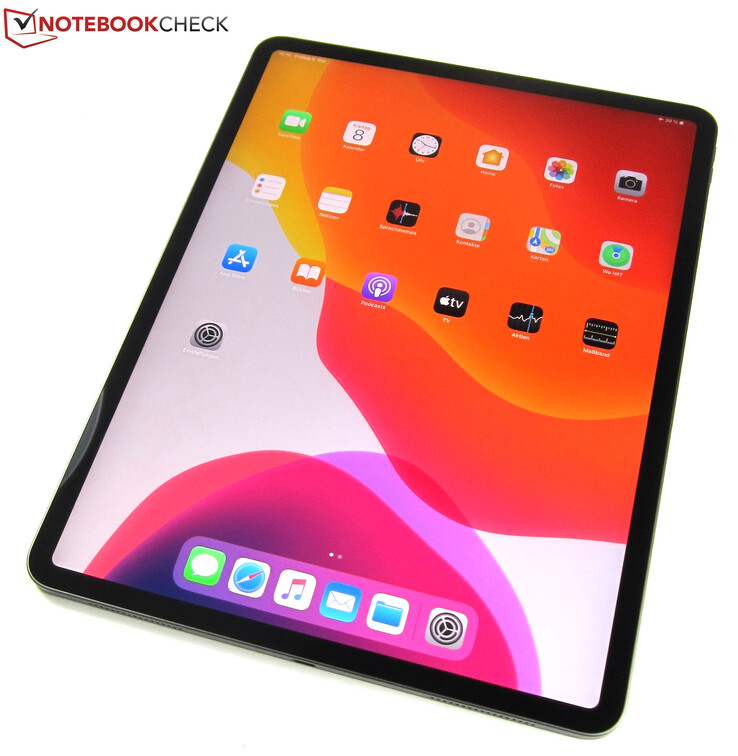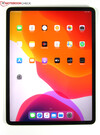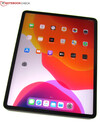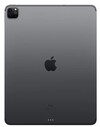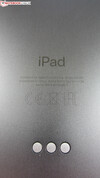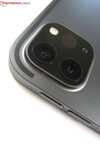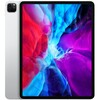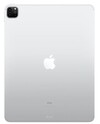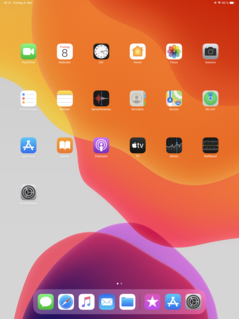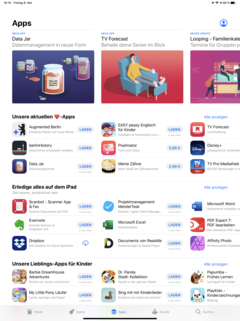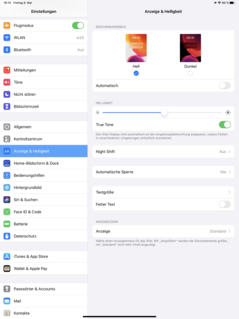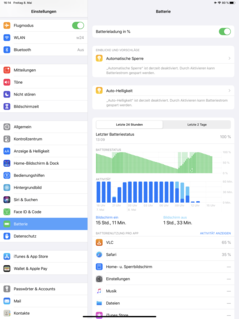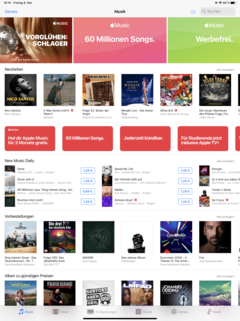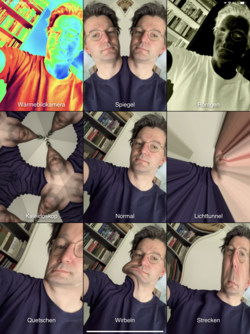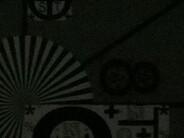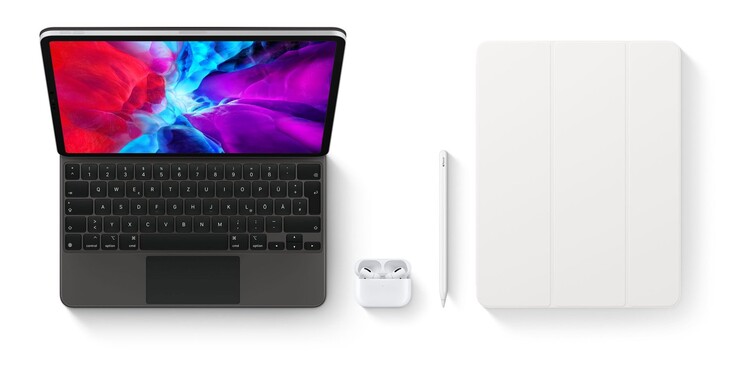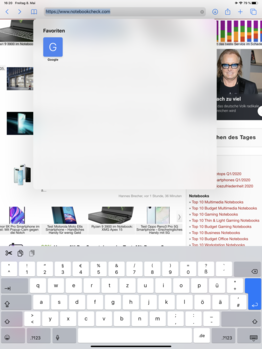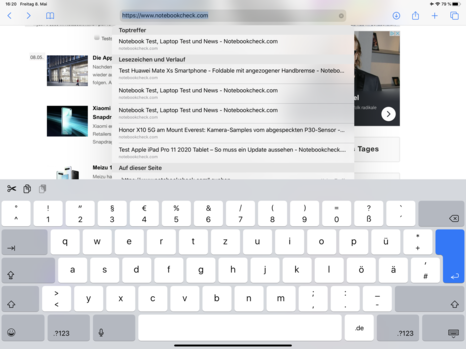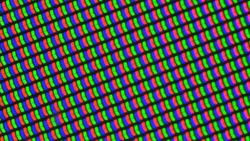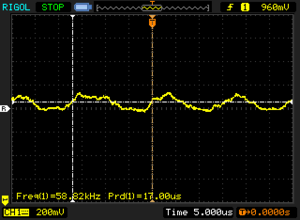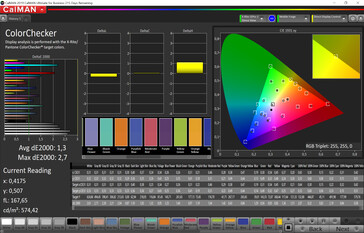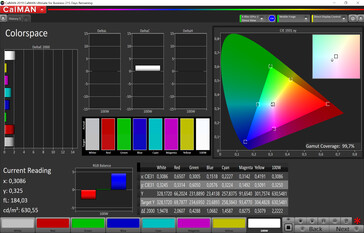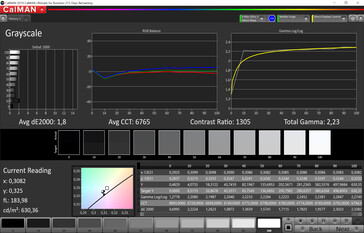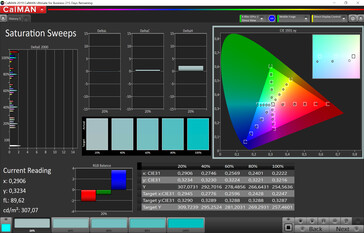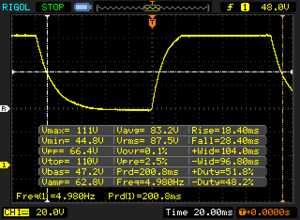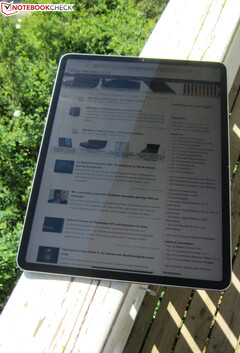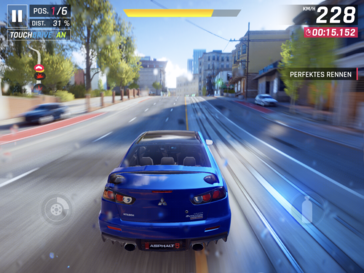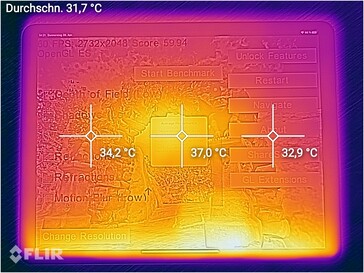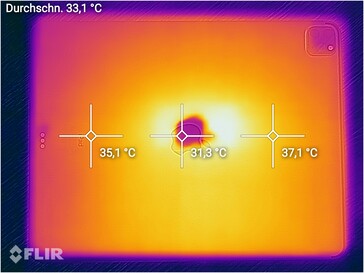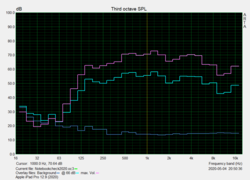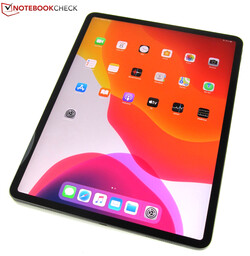Apple iPad Pro 12.9 (2020) Review: Fine-tuning the Flagship
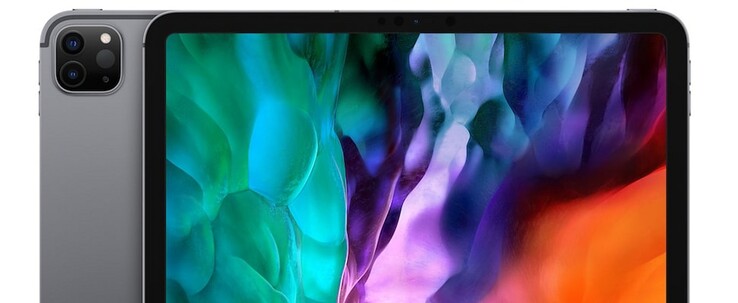
As with the previous version, Apple has positioned the iPad Pro (2020) as a laptop replacement. Without the optional keyboard however, it still remains a tabet for the most part - although the device is fairly large in our case.
Having already tested the 11-inch model Apple iPad Pro 11 (2020), we are now taking a look at the bigger model, the Apple iPad Pro 12.9 (2020). It comes fairly close to a compact notebook with its XXL form factor. According to Apple, it is even supposed to be faster than the majority of them. Our review will show whether this is actually the case.
While the exterior of the iPad Pro 12.9 (2020) barely differs from its predecessor Apple iPad Pro 12.9 (2018), there are a few new components on the inside. This includes an even more powerful SoC (Apple A12Z Bionic), 6 GB of RAM across all memory configurations and an updated 12-MP camera module. The specifications also list Wi-Fi 6 and a LiDAR scanner for augmented reality that is integrated into the camera.
Rating | Date | Model | Weight | Height | Size | Resolution | Price |
|---|---|---|---|---|---|---|---|
| 89.3 % v7 (old) | 05 / 2020 | Apple iPad Pro 12.9 2020 A12Z Bionic, A12Z Bionic GPU | 641 g | 5.9 mm | 12.90" | 2732x2048 | |
| 90.2 % v7 (old) | 11 / 2018 | Apple iPad Pro 12.9 2018 A12X Bionic, A12X Bionic GPU | 633 g | 5.9 mm | 12.90" | 2732x2048 | |
| 90.4 % v7 (old) | 04 / 2020 | Apple iPad Pro 11 2020 A12Z Bionic, A12Z Bionic GPU | 471 g | 5.9 mm | 11.00" | 2388x1668 | |
| 88.1 % v7 (old) | 02 / 2020 | Microsoft Surface Pro 7 i7-1065G7, Iris Plus Graphics G7 (Ice Lake 64 EU) | 790 g | 8.5 mm | 12.30" | 2736x1824 | |
| 87.8 % v7 (old) | 10 / 2019 | Samsung Galaxy Tab S6 SM-T860 SD 855, Adreno 640 | 420 g | 5.7 mm | 10.50" | 2560x1600 |
Case - Lightweight and Slim, but Slightly too Flexible
Despite its huge size, the iPad Pro 12.9 (2020) is a very slim device. It owes this to its beautifully slim bezels and a build height of only 5.9 millimeters (~0.23 in), which has also been a highlight of the identically-sized Apple iPad Pro 12.9 (2018).
As with other Apple products, there are no flaws in terms of the build quality. The silver or space gray aluminum unibody of the iPad Pro 12.9 (2020) not only looks very sleek, but also has a premium feel. Even though the camera module still protrudes from the back of the device by a few millimeters, the iPad Pro does not wiggle around on flat surfaces. Although the corner on the opposite side of the camera module yields slightly in this case, this is not an issue during use.
A disadvantage of the slim construction: With a sufficiently large amount of force, it is possible to produce wavelike distortions on the display or twist the case slightly. That being said, the iPad Pro 12.9 (2020) is definitely sufficiently robust for daily use. However, there is still no IP certification.
Features - Now with 6 GB of RAM by Default
The iPad Pro 12.9 (2020) starts at 1099 Euros ($999). For the price, buyers get 128 GB of storage and Wi-Fi connectivity. Our test device is the second cheapest version at 1209 Euros ($1099) and comes with 256 GB of storage space. The top configuration includes 1 TB of storage space and an additional LTE module for 1819 Euros ($1649). The iPad Pro 11 (2020) starts at 879 Euros ($799).
With the iPad Pro 12.9 (2018), Apple has already abandoned the Lightning port. Similarly, the current iPad Pro 12.9 (2020) relies on a USB-C port, which supports USB 3.1 Gen 1 speeds. It can be used to transfer photos to a PC and combined with an appropriate HDMI adapter, to connect external displays. The physical connectivity also includes a dock port with 3 pins on the back and a magnetic connector for the Apple Pencil on the right edge.
Aside from the traditional Smart Keyboard, the new Magic Keyboard can also be connected to the dock port. The new keyboard has a floating design, backlit keys and an integrated trackpad. With it, the iPad comes fairly close to a notebook in terms of functionality.
Software - iPadOS 13.4 Leads the Way
The Apple iPad Pro 12.9 (2020) runs iPadOS 13. Starting with the latest version available at the time of testing (13.4), the operating system supports touchpads and mice. If one of these peripherals is used, the tablet shows a cursor that changes depending on the context.
Since iPadOS is of course designed for the Apple universe, the iPad Pro 12.9 (2020) is only usable as a notebook replacement in a limited capacity. Unlike on a PC, the file management is rudimentary and transferring data requires iTunes or cloud solutions. Similarly, Windows users have more options when it comes to the app selection, since there are usually dozens of software applications for any given use case. That being said, Apple continues to make more ground in this department. The iPad version of Photoshop for example, is coming closer and closer to the PC/Mac versions.
Communication and GPS - WiFi-6 Speeds Only for Transmissions
The iPad Pro 12.9 (2020) supports the latest Wi-Fi standard Wi-Fi 6. In conjunction with our reference router Netgear Nighthawk AX12, it does not quite achieve the expected results when receiving data. Here, high-end competitors such as the Microsoft Surface Pro 7 and the Samsung Galaxy Tab S6 are able to reach better transfer rates.
The Apple tablet is as fast as the iPad Pro 11 (2020), which is equipped with the Wi-Fi module, and slightly faster than the iPad Pro 12.9 (2018).
Our configuration of the iPad Pro 12.9 (2020) lacks a GPS module. While navigation is possible via Wi-Fi networks and compass, the tablet is not the best choice for navigation purposes due to its XXL form factor.
Cameras - New 12-MP Lens with LiDAR Sensor
The Apple iPad Pro 12.9 (2020) integrates the same camera as the 11-inch model. It is based on a 12-megapixel main sensor with optical image stabilization that is supported by an ultra wide-angle lens with a resolution of 10 megapixels.
Apple has integrated a LiDAR (light detection and ranging) scanner within the 12-MP camera. It measures the travel time of light from a distance of up to 5 meters (~16 ft) with a margin of error within nanoseconds according to Apple. This makes the tablet an excellent device for augmented reality applications.
For a tablet, the image quality of the iPad Pro is above average. In daylight (scene 1), the results look very lifelike without sacrificing color accuracy. Even in ultra wide-angle shots (scene 3) or at 5x zoom (scene 4), the iPad Pro manages to fairly accurately capture many fine details. However, the tablet does not fare well in low-light situations (scene 2). Here, the difference compared to current smartphone optics is the most noticeable.
We have no complaints when it comes to video recordings. The iPad Pro records at 4K with up to 60 frames per second and the video quality is outstanding. The same holds true for the selfie camera, which aside from a resolution of 7 MP also offers features such as a portrait mode that blurs the background.
In our laboratory, the main camera manages to produce pictures with a high dynamic range and for the most part accurate colors, provided the lighting conditions are good. In this case, the iPad Pro also captures our test chart with a great deal of sharpness. However, poor lighting conditions quickly overwhelm the tablet's optics. The color deviations are then substantial and details become indistinguishable from one another.
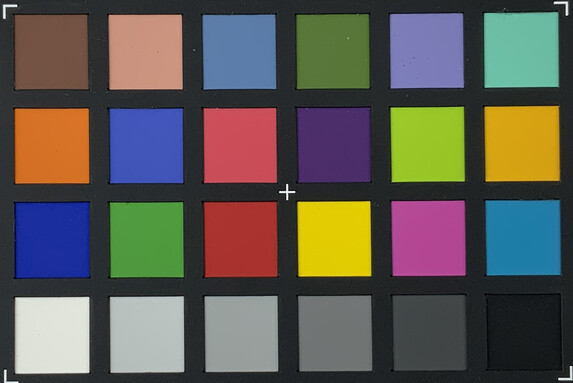
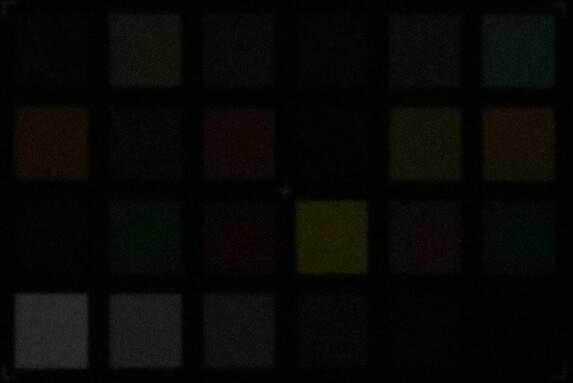
Accessories and Warranty - Many Choices for the iPad Pro
Apple includes a USB-C power adapter rated for up to 18 watts with the iPad Pro 12.9 (2020). The package also includes a USB-C cable (type-C to type-C) and a folded piece of paper with a quick start guide and the warranty information.
Apple only offers buyers of the tablet a 1-year warranty. Thankfully, this does not affect the seller guarantee. In the EU, it is valid for 24 months beginning from the date of purchase.
AppleCare+ can be selected as an optional service for 139 Euros ($129). Users are then protected against accidental damages for 2 years. However, only 2 repairs are covered and Apple charges an additional service fee. Buyers who wish to lower the cost of the iPad Pro can attempt to get credit for their old tablet via Apple's trade-in option on the Apple web store.
Aside from the usual accessories, which include the Apple Pencil (135 Euros/$129) and the Smart Keyboard (219 Euros/~$159), the Magic Keyboard will thus be available for both tablets at the end of May. For a hefty 399 Euros (~$349), buyers receive a full-featured notebook keyboard with backlit keys and an integrated touchpad. As with the Smart Keyboard, the Magic Keyboard magnetically attaches to the iPad Pro, but unlike the former, the Magic Keyboard suspends the tablet in the air above the keyboard, which allows users to freely adjust the angle.
Input Devices & Handling - Very Responsive Touchscreen
The Apple iPad Pro 12.9 (2020) responds extremely quickly and precisely to inputs, which it owes not just to the fast octa-core processor A12Z Bionic but also the 120-Hz display that guarantees a very smooth visual experience. Daily tasks such as switching between applications, starting apps or scrolling through web pages or menus are not even close to being a challenge for the tablet.
Similarly, the virtual keyboard's generously-dimensioned keys and the three physical buttons on the tablet integrate seamlessly into the user experience. The power/standby button on the top edge and the volume buttons on the right edge require a small, adequate amount of actuation force. They fit neatly into the chassis and offer a satisfying acoustic feedback.
There is no fingerprint sensor on the iPad Pro. Instead, users can authenticate themselves via a pin code or FaceID. The facial recognition worked well in our test and quickly unlocked the tablet.
Display - iPad Pro with 120-Hz True Tone Panel
The main focus of the iPad Pro has not changed with the 2020 update: The latest iPad Pro also comes with a liquid retina display with a 120-Hz refresh rate.
With an average brightness of 598.7 cd/m², the display shines brighter compared to the displays of Microsoft's and Samsung's alternatives. With the ambient light sensor disabled, the luminosity increases to up to 631 cd/m², whereas we measured a brightness of 624 cd/m² in our test with evenly distributed bright and dark areas (APL50).
While the 12.9-inch iPad displays 2732x2048 pixels, the 11-inch model has a native resolution of 2388x1668 pixels. Thus, there are no differences compared to the previous models, which includes the remaining specifications. Similarly, the big and the small iPad Pro both once again sport a high pixel density of 265 PPI. Furthermore, True Tone allows the tablets to adjust the display's colors to ambient lighting conditions for uniform-looking colors in almost any situation.
| |||||||||||||||||||||||||
Brightness Distribution: 87 %
Center on Battery: 625 cd/m²
Contrast: 1330:1 (Black: 0.47 cd/m²)
ΔE ColorChecker Calman: 1.3 | ∀{0.5-29.43 Ø4.79}
ΔE Greyscale Calman: 1.8 | ∀{0.09-98 Ø5}
99.7% sRGB (Calman 2D)
Gamma: 2.23
CCT: 6765 K
| Apple iPad Pro 12.9 2020 IPS, 2732x2048, 12.9" | Apple iPad Pro 12.9 2018 IPS, 2732x2048, 12.9" | Apple iPad Pro 11 2020 IPS, 2388x1668, 11" | Microsoft Surface Pro 7 IPS, 2736x1824, 12.3" | Samsung Galaxy Tab S6 SM-T860 Super AMOLED, 2560x1600, 10.5" | |
|---|---|---|---|---|---|
| Screen | 15% | 16% | 5% | -47% | |
| Brightness middle (cd/m²) | 625 | 632 1% | 617 -1% | 435 -30% | 446 -29% |
| Brightness (cd/m²) | 599 | 605 1% | 585 -2% | 422 -30% | 445 -26% |
| Brightness Distribution (%) | 87 | 91 5% | 84 -3% | 90 3% | 86 -1% |
| Black Level * (cd/m²) | 0.47 | 0.32 32% | 0.36 23% | 0.32 32% | |
| Contrast (:1) | 1330 | 1975 48% | 1714 29% | 1359 2% | |
| Colorchecker dE 2000 * | 1.3 | 1.1 15% | 0.94 28% | 1.18 9% | 2.7 -108% |
| Colorchecker dE 2000 max. * | 2.7 | 2.4 11% | 1.87 31% | 2.27 16% | 5.4 -100% |
| Greyscale dE 2000 * | 1.8 | 1.7 6% | 1.4 22% | 1.12 38% | 2.1 -17% |
| Gamma | 2.23 99% | 2.21 100% | 2.156 102% | 2.3 96% | 2.05 107% |
| CCT | 6765 96% | 6794 96% | 6733 97% | 6502 100% | 6468 100% |
| Colorchecker dE 2000 calibrated * | 3.49 | ||||
| Color Space (Percent of AdobeRGB 1998) (%) | 60 | ||||
| Color Space (Percent of sRGB) (%) | 96 |
* ... smaller is better
Screen Flickering / PWM (Pulse-Width Modulation)
| Screen flickering / PWM detected | 58820 Hz | ≤ 13 % brightness setting | |
The display backlight flickers at 58820 Hz (worst case, e.g., utilizing PWM) Flickering detected at a brightness setting of 13 % and below. There should be no flickering or PWM above this brightness setting. The frequency of 58820 Hz is quite high, so most users sensitive to PWM should not notice any flickering. In comparison: 53 % of all tested devices do not use PWM to dim the display. If PWM was detected, an average of 8152 (minimum: 5 - maximum: 343500) Hz was measured. | |||
The image quality of the iPad Pro 12.9 (2018) was already excellent. The iPad Pro 12.9 (2020) continues this trend. A closer look with a spectrophotometer and the CalMAN software shows that the display comes very close to the ideal gamma value and color temperature. With DeltaE values of < 2, the color representation is within the optimal range as well. Thus, the iPad Pro 12.9 (2020) is very well suited to work where exact colors are paramount.
Display Response Times
| ↔ Response Time Black to White | ||
|---|---|---|
| 24.4 ms ... rise ↗ and fall ↘ combined | ↗ 8.4 ms rise | |
| ↘ 16 ms fall | ||
| The screen shows good response rates in our tests, but may be too slow for competitive gamers. In comparison, all tested devices range from 0.1 (minimum) to 240 (maximum) ms. » 56 % of all devices are better. This means that the measured response time is worse than the average of all tested devices (20.3 ms). | ||
| ↔ Response Time 50% Grey to 80% Grey | ||
| 46.8 ms ... rise ↗ and fall ↘ combined | ↗ 18.4 ms rise | |
| ↘ 28.4 ms fall | ||
| The screen shows slow response rates in our tests and will be unsatisfactory for gamers. In comparison, all tested devices range from 0.165 (minimum) to 636 (maximum) ms. » 80 % of all devices are better. This means that the measured response time is worse than the average of all tested devices (31.7 ms). | ||
Performance - It's Lonely at the Top
The new iPad Pro is equipped with the Apple A12Z Bionic. The octa-core SoC based on the 7nm process supersedes the A12X of the previous iPad and it has an improved thermal design, which according to Apple, allows for a better peak and long-term performance.
As the synthetic benchmarks show, the iPad Pro 12.9 (2020) is slightly faster than the iPad Pro 12.9 (2018) and it outperforms even the fastest Android tablets. Since it is equipped with 6 GB of RAM by default - only the 1-TB configuration of the predecessor had this much system memory -, it can handle large files and demanding applications even better than its predecessor.
Unfortunately, many benchmarks were not yet compatible with iPadOS 13.4 at the time of testing, including 3DMark Sling Shot, GFXBench and Basemark OS II. We will perform these benchmarks at a later date, when the appropriate updates have been released.
| 3DMark | |
| 1280x720 offscreen Ice Storm Unlimited Score | |
| Apple iPad Pro 11 2020 | |
| Average Apple A12Z Bionic (110582 - 110846, n=2) | |
| Apple iPad Pro 12.9 2020 | |
| Apple iPad Pro 12.9 2018 | |
| Samsung Galaxy Tab S6 SM-T860 | |
| 1280x720 offscreen Ice Storm Unlimited Graphics Score | |
| Apple iPad Pro 11 2020 | |
| Average Apple A12Z Bionic (220422 - 221941, n=2) | |
| Apple iPad Pro 12.9 2020 | |
| Apple iPad Pro 12.9 2018 | |
| Samsung Galaxy Tab S6 SM-T860 | |
| 1280x720 offscreen Ice Storm Unlimited Physics | |
| Apple iPad Pro 12.9 2020 | |
| Average Apple A12Z Bionic (40279 - 40299, n=2) | |
| Apple iPad Pro 11 2020 | |
| Apple iPad Pro 12.9 2018 | |
| Samsung Galaxy Tab S6 SM-T860 | |
| AnTuTu v8 - Total Score | |
| Apple iPad Pro 12.9 2020 | |
| Average Apple A12Z Bionic (712218 - 751846, n=2) | |
| Apple iPad Pro 11 2020 | |
| Basemark ES 3.1 / Metal - offscreen Overall Score | |
| Apple iPad Pro 12.9 2020 | |
| Average Apple A12Z Bionic (5657 - 5709, n=2) | |
| Apple iPad Pro 11 2020 | |
| Apple iPad Pro 12.9 2018 | |
| Average of class Tablet (255 - 5784, n=10, last 2 years) | |
Browsing the web with the Apple tablet is a breeze. Pages are displayed in a snap and content such as videos load very quickly.
| Jetstream 2 - 2.0 Total Score | |
| Average of class Tablet (22.3 - 395, n=72, last 2 years) | |
| Apple iPad Pro 11 2020 (Safari 14.1) | |
| Apple iPad Pro 11 2020 (Chrome 80) | |
| Apple iPad Pro 12.9 2020 (Safari 13) | |
| Average Apple A12Z Bionic (124.5 - 127.4, n=3) | |
| Samsung Galaxy Tab S6 SM-T860 (Chrome 77.0.3865.116) | |
| JetStream 1.1 - Total Score | |
| Apple iPad Pro 12.9 2018 (Safari Mobile 12) | |
| Apple iPad Pro 11 2020 (Chrome 80) | |
| Average Apple A12Z Bionic (272 - 274, n=2) | |
| Apple iPad Pro 12.9 2020 (Safari 13) | |
| Microsoft Surface Pro 7 (Microsoft Edge 44.18362.449.0) | |
| Samsung Galaxy Tab S6 SM-T860 (Chrome 77.0.3865.116) | |
| WebXPRT 3 - Overall | |
| Average of class Tablet (39 - 480, n=28, last 2 years) | |
| Apple iPad Pro 11 2020 (Safari 14.1) | |
| Apple iPad Pro 11 2020 (Chrome 80) | |
| Apple iPad Pro 12.9 2018 (Safari Mobile 12) | |
| Average Apple A12Z Bionic (140 - 194, n=3) | |
| Apple iPad Pro 12.9 2020 (Safari 13) | |
| Samsung Galaxy Tab S6 SM-T860 (Chrome 77.0.3865.116) | |
| Speedometer 2.0 - Result 2.0 | |
| Average of class Tablet (2.59 - 790, n=61, last 2 years) | |
| Apple iPad Pro 11 2020 (Safari 14.1) | |
| Average Apple A12Z Bionic (135 - 154, n=2) | |
| Apple iPad Pro 12.9 2020 (Safari 13) | |
| Samsung Galaxy Tab S6 SM-T860 (Chrome 77.0.3865.116) | |
| Octane V2 - Total Score | |
| Apple iPad Pro 12.9 2018 (Safari Mobile 12) | |
| Apple iPad Pro 12.9 2020 (Safari 13) | |
| Average Apple A12Z Bionic (42372 - 43057, n=3) | |
| Apple iPad Pro 11 2020 (Safari 14.1) | |
| Apple iPad Pro 11 2020 (Chrome 80) | |
| Average of class Tablet (763 - 138481, n=103, last 2 years) | |
| Microsoft Surface Pro 7 (Microsoft Edge 44.18362.449.0) | |
| Samsung Galaxy Tab S6 SM-T860 (Chrome 77.0.3865.116) | |
| Mozilla Kraken 1.1 - Total | |
| Average of class Tablet (243 - 27101, n=85, last 2 years) | |
| Samsung Galaxy Tab S6 SM-T860 (Chrome 77.0.3865.116) | |
| Microsoft Surface Pro 7 (Microsoft Edge 44.18362.449.0) | |
| Apple iPad Pro 11 2020 (Chrome 80) | |
| Apple iPad Pro 12.9 2020 (Safari 13) | |
| Average Apple A12Z Bionic (646 - 646, n=2) | |
| Apple iPad Pro 12.9 2018 (Safari Mobile 12) | |
* ... smaller is better
As per usual, Apple provides no information concerning the type or performance of the internal storage. Due to this, we used the app PassMark to get a rough estimate of the speed.
The PassMark results confirm our expectations and attest the internal storage very high transfer speeds. The real-world experience mirrors the high benchmark scores. The system responds very quickly and navigating through menus and applications is extraordinarily smooth.
Gaming - No Limits
The tablet runs games very smoothly. In our test, it did not break a sweat when faced with our selection of games that consists of current and graphically demanding titles. Examples "PUBG Mobile" and "Asphalt 9: Legends": Our test tool Gamebench confirms the maximum possible frame rates for both games, which in the case of "PUBG Mobile" is slightly above 30 FPS and the 60 FPS limit for "Asphalt 9". As these results show, the 120-Hz display is not been taken advantage of here. Meanwhile, the iPad Pro is also well suited to gaming thanks to the great sound produced by its four speakers.
Emissions - Powerful Quad Speakers
Temperature
While idling, only a few spots on the iPad Pro 12.9 (2020) become slightly warm to the touch. Under load, the temperatures barely rise and the heat is distributed evenly across the entire surface of the tablet. Conveniently, the hot spots are located in the center, which users are most unlikely to come into contact with when holding the device.
We were excited to test whether the iPad Pro is able to provide a consistent performance level under a prolonged load or if the SoC has to throttle at some point. We usually use the app GFXBench for this purpose. Unfortunately, it does not appear to be compatible with iPadOS 13.4 and a connection to the servers of the provider could not be established.
(+) The maximum temperature on the upper side is 39.1 °C / 102 F, compared to the average of 33.7 °C / 93 F, ranging from 20.7 to 53.2 °C for the class Tablet.
(+) The bottom heats up to a maximum of 37.4 °C / 99 F, compared to the average of 33.2 °C / 92 F
(±) In idle usage, the average temperature for the upper side is 33.6 °C / 92 F, compared to the device average of 30 °C / 86 F.
Speakers
As usual, the four speakers of the iPad Pro are powerful and exceptional for a tablet.
The pink noise test confirms the well-balanced sound stage of the four speakers, although due to the lack of a large resonance chamber, lower tones are naturally somewhat underrepresented. The iPad Pro 12.9 (2020) still produces very harmonious stereo sound overall. External speakers can be connected to the tablet via USB-C or Bluetooth.
Apple iPad Pro 12.9 2020 audio analysis
(±) | speaker loudness is average but good (81 dB)
Bass 100 - 315 Hz
(±) | reduced bass - on average 6.6% lower than median
(±) | linearity of bass is average (10.6% delta to prev. frequency)
Mids 400 - 2000 Hz
(+) | balanced mids - only 4.2% away from median
(+) | mids are linear (4.6% delta to prev. frequency)
Highs 2 - 16 kHz
(+) | balanced highs - only 4.1% away from median
(+) | highs are linear (5.5% delta to prev. frequency)
Overall 100 - 16.000 Hz
(+) | overall sound is linear (11.2% difference to median)
Compared to same class
» 11% of all tested devices in this class were better, 4% similar, 84% worse
» The best had a delta of 7%, average was 21%, worst was 129%
Compared to all devices tested
» 6% of all tested devices were better, 2% similar, 92% worse
» The best had a delta of 4%, average was 24%, worst was 134%
Microsoft Surface Pro 7 audio analysis
(-) | not very loud speakers (65.2 dB)
Bass 100 - 315 Hz
(±) | reduced bass - on average 10.2% lower than median
(±) | linearity of bass is average (12.1% delta to prev. frequency)
Mids 400 - 2000 Hz
(+) | balanced mids - only 4.6% away from median
(±) | linearity of mids is average (10.2% delta to prev. frequency)
Highs 2 - 16 kHz
(+) | balanced highs - only 3.1% away from median
(+) | highs are linear (6.8% delta to prev. frequency)
Overall 100 - 16.000 Hz
(±) | linearity of overall sound is average (21.5% difference to median)
Compared to same class
» 58% of all tested devices in this class were better, 11% similar, 32% worse
» The best had a delta of 6%, average was 20%, worst was 57%
Compared to all devices tested
» 60% of all tested devices were better, 7% similar, 34% worse
» The best had a delta of 4%, average was 24%, worst was 134%
Energy Management - Long Battery Life Guaranteed
Energy Consumption
The current iPad Pro 12.9 draws slightly less power than its predecessor and in spite of the far bigger display, the consumption is similar to that of the iPad Pro 11. Windows tablets such as the Microsoft Surface Pro 7 are far from this level of energy efficiency. Meanwhile, Android tablets such as the Samsung Galaxy Tab S6 are even more economical still.
Apple includes an 18-watt power adapter with the iPad Pro. In our test, fully charging the battery of the iPad Pro 12.9 (2020) took 2:55 hours.
| Off / Standby | |
| Idle | |
| Load |
|
Key:
min: | |
| Apple iPad Pro 12.9 2020 9720 mAh | Apple iPad Pro 12.9 2018 mAh | Apple iPad Pro 11 2020 7538 mAh | Microsoft Surface Pro 7 mAh | Samsung Galaxy Tab S6 SM-T860 7040 mAh | |
|---|---|---|---|---|---|
| Power Consumption | -8% | 11% | -169% | 30% | |
| Idle Minimum * (Watt) | 1.22 | 1.42 -16% | 1.3 -7% | 4.4 -261% | 1.96 -61% |
| Idle Average * (Watt) | 8.68 | 9.35 -8% | 3.5 60% | 8.7 -0% | 2.8 68% |
| Idle Maximum * (Watt) | 8.75 | 9.38 -7% | 5.6 36% | 9.6 -10% | 2.82 68% |
| Load Average * (Watt) | 11.72 | 12.75 -9% | 12.5 -7% | 44 -275% | 5.31 55% |
| Load Maximum * (Watt) | 15.25 | 14.96 2% | 19.2 -26% | 61 -300% | 11.91 22% |
* ... smaller is better
Battery Life
The battery life of the iPad Pro 12.9 (2020) is generally good, although it is slightly inferior compared to the predecessor's runtimes. Nonetheless, about 15 hours of simulated web browsing and a good 12 hours of video playback is a statement. In practice, one battery charge should easily last one or two days.
Although compared to the iPad Pro 11 (2020), the battery of the iPad Pro 12.9 (2020) is significantly larger - 9720 vs 7538 mAh -, the bigger battery does not translate into an advantage for the latter, since its runtimes are about 14% shorter. This stems from the substantially larger, higher resolution and thus more demanding display.
| Apple iPad Pro 12.9 2020 9720 mAh | Apple iPad Pro 12.9 2018 mAh | Apple iPad Pro 11 2020 7538 mAh | Microsoft Surface Pro 7 mAh | Samsung Galaxy Tab S6 SM-T860 7040 mAh | |
|---|---|---|---|---|---|
| Battery runtime | 6% | 14% | -44% | 14% | |
| Reader / Idle (h) | 30.5 | 31.5 3% | 33.4 10% | 11.5 -62% | 21.3 -30% |
| H.264 (h) | 12.3 | 15 22% | 15.6 27% | 6.7 -46% | 14.5 18% |
| WiFi v1.3 (h) | 15.1 | 13.3 -12% | 15 -1% | 9.8 -35% | 9.3 -38% |
| Load (h) | 2.8 | 3.1 11% | 3.3 18% | 1.9 -32% | 5.7 104% |
Pros
Cons
Verdict: Expanding its Lead
The iPad Pro is currently the best tablet on the market. It is extremely fast, its well-calibrated True Tone display is a blessing for creative users, the user experience is tremendously smooth, its four integrated speakers produce excellent stereo sound and the tablet is among the best in terms of the battery life as well.
Apple has further optimized what has already been the best tablet on the market with a few cautious updates.
All of these features were already present on the previous version. However, a few conservative updates such as an updated camera with a LiDAR sensor, a slightly faster CPU and 6 GB of RAM by default regardless of the storage configuration now further separate the iPad Pro from other Apple tablets, not to mention Android alternatives.
Thanks to its bigger screen, the iPad Pro 12.9 (2020) as the current flagship of the iPad Pro series is even better suited to professional use cases than the iPad Pro 11 (2020). That being said, its full potential can only be unlocked via accessories, which like the tablet itself, are fairly expensive. The Magic Keyboard, which is set to be released at the end of May, should bring it quite close to a notebook.
Apple iPad Pro 12.9 2020
- 05/13/2020 v7 (old)
Manuel Masiero




